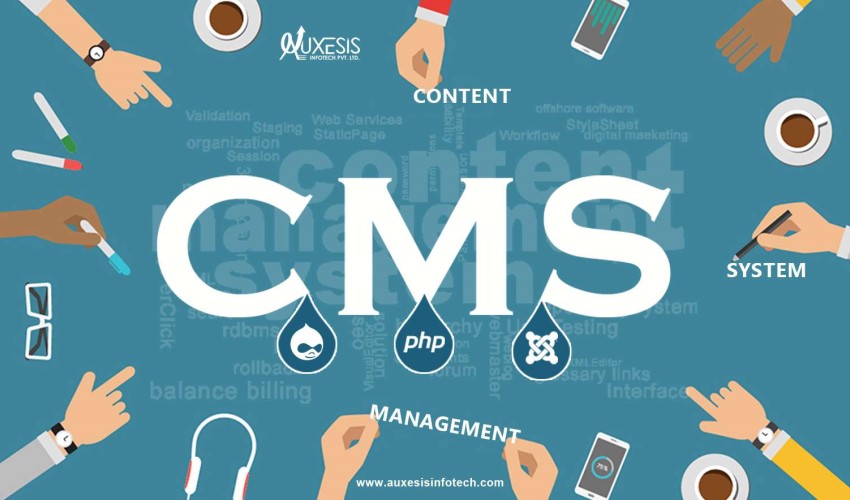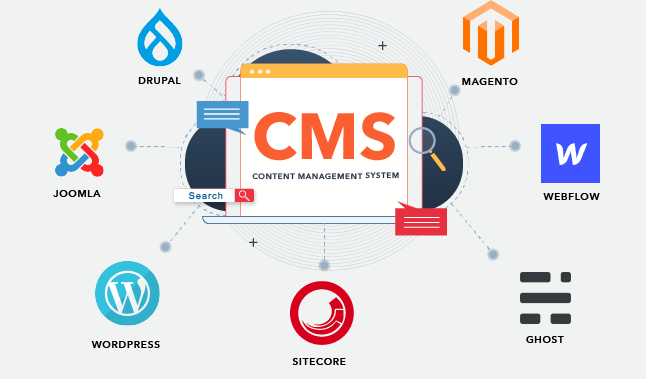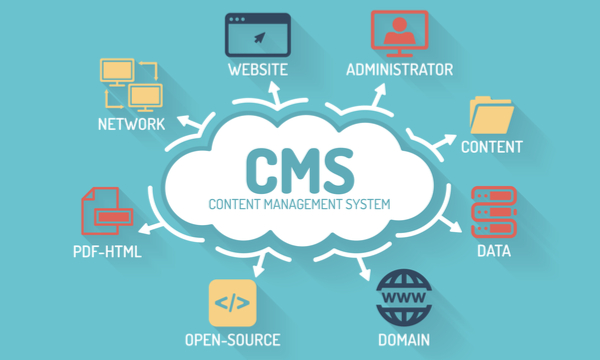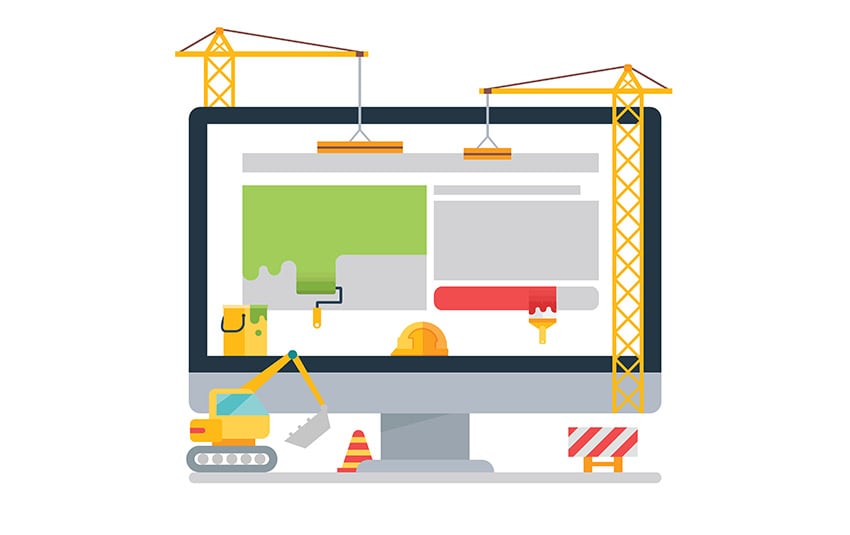In this article, we are going to define CMS or content management system. Content Management System, abbreviated as CMS, is actually your site’s content management system and allows you to easily make any changes to your site’s content.
In the past, the coding system in zero and one language was used to design the site and register its content, which must have been done by an expert programmer. This programmer should have mastered the coding language. The problem was that the sites were set up statically, and if the employer and site owner needed to make changes or add new content, they could not do anything. As a result, in order to manage the content of the site and enter any new content or make small changes, one had to refer to the programming again to be able to apply the changes by writing new codes. Of course, applying these changes was not easy and it took a lot of time and money.
In order to make site design possible in an easier way, experts designed a content management system that can make changes to the site content more easily and in less time. so that there is no need for new coding. Since for this it was necessary to hire and help a new programmer, the complementary process of the site’s content management system was launched in its current form and CMS.
The content management system allows the site owner to manage his site after the design and launch process. With the help of CMS, the site owner and manager can make some adjustments and changes independently without the need for a programmer or coding knowledge.

CMSs are generally divided into two parts:
Control management applicant
This element is related to uploading new content, making changes or deleting part of the content. For this, one does not need knowledge and expertise in coding and programming.
Control delivery applicant
This element records the applied changes and displays it to the user after updating the site.
Why we should use CMSs?
- It takes a little time to update and apply changes.
- Working with it is simple and convenient and does not require knowledge of programming or HTML language.
- Dynamic sites that are managed with CMS are more attractive than static sites.
- Content management and site control is easily possible with CMS.
- The site is more flexible.
- High Site security with CMS.
- Reducing the percentage of errors and entering duplicate information (it can be easily corrected if it occurs).
- Reducing site maintenance costs or other side costs.
Content management systems or CMS Features
The features of content management systems are very wide but most of these systems include the following features:
- web-based publishing
- format manager
- revision control
- searching
- Indexing
- information retrieval
Below is a brief description of each of the above features:
web-based publishing:
The web-based publishing feature provides templates or a set of templates provided by the organization to the users. These templates can be considered similar to wizards or similar tools for creating site content or making changes.
formed management
Formed management provides the possibility of converting electronic documents and scanned documents into widely used formats such as HTML or PDF (portable document format) and…
controlling revision
This feature provides the possibility of updating the content of the site to newer versions as well as changing the content to older versions. It also allows the tracking of any changes made by users in the files and It provides logs.
Other features:
Another useful feature of CMS is indexing, searching, and information retrieval. The CMS system provides the possibility of indexing all the information of an organization. As a result, users/employees of the organization can extract relevant information from the content management system by searching for the desired terms.
How does CMSs work?
- Creating website content
- site content management
- Publication of contents
- Displaying content on the site
a) Creating website content:
In the content management system or CMS, a very simple and functional environment has been implemented to easily work. In fact, without the need to have technical knowledge or specialized information or even familiarity with HTML commands, you only need to enter the terms you want.
Also, the CMSs allows you to manage the structure of the website pages. For example, which pages should be displayed, or which pages should be linked. It is also possible to easily copy content (drag-and-drop), without disturbing their structure.
Also, nowadays, most CMSs support the web-based design environment and provide the possibility of remote site content management.In fact, one of the features that has made CMS popular is the writing environment and simple mechanism for entering site content and simple website maintenance.
b) site content management:
The various pages and related content that are imported and stored in the central core of the CMS. In other words all the content and settings related to each page are stored there.
Storing all information in a central core creates the following functional features:
- The ability to track the changes applied to all pages by employees and the date of the last changes
- Ability to restrict user access to specific pages
- Integration with existing information sources and IT systems
When a page is created, the page is automatically sent to the administration section and the relevant administrator must approve it. Then it is sent to the review team for final review and finally it is published on the site after the final review and corrections. By using the content management system, CMS manages the above steps automatically and sends different parts to the relevant persons. In fact, with this work, the possibility of managing the site by more people will be easily provided, and as a result, the quality, accuracy and stability of the information will be closely monitored.
c) Publication of content on the site:
After the content is prepared and finally approved, you can decide when the content will be displayed on the site. The content management system includes very powerful publishing engines that allow you to manage the layers and appearance of the site pages when publishing content on the site.
Due to the many designs, CMS provides the possibility to create and change the appearance of the website pages easily according to your taste. In fact, you decide which article will be displayed in which section of the site. As a result, the CMS will automatically publish the content on the site, and it is enough for you to focus only on the content of the site.
d) Displaying content on the site:
The content management system also provides another feature to increase the quality and effectiveness of the site. For example, CMS supports the possibility of displaying the site in different browsers. They also provide the possibility of having a dynamic site.
Types of CMS or content management system

There are different kinds of content system management or CMS. Including
- WordPress
- Joomla
- Drupal
- Magento
- Text pattern
- PrestaShop and…
Each of these CMS has its own advantages and disadvantages. But among all of them, WordPress was chosen as the most popular content management system in 2020 and its users are added daily.







Leave feedback about this
You must be logged in to post a comment.